
How to Use 10k Potentiometer: Examples, Pinouts, and Specs
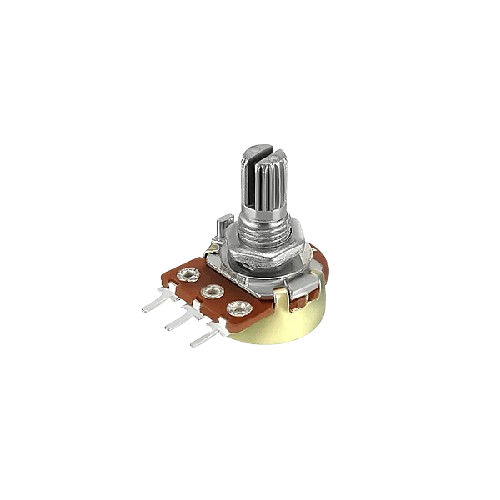
 Design with 10k Potentiometer in Cirkit Designer
Design with 10k Potentiometer in Cirkit Designer10k Potentiometer Documentation
1. Introduction
The 10k Potentiometer is a variable resistor that allows for adjustable resistance up to 10,000 ohms (10kΩ). It is a three-terminal device commonly used in electronic circuits for applications such as:
- Volume control in audio devices.
- Tuning and calibration in analog circuits.
- Adjustable voltage dividers for sensor inputs.
- Brightness control in LED circuits.
- User input for microcontroller-based projects (e.g., Arduino).
The potentiometer is a versatile component that provides precise control over resistance, making it an essential tool for both hobbyists and professionals.
2. Technical Specifications
The following table outlines the key technical details of the 10k potentiometer:
| Parameter | Value |
|---|---|
| Resistance Range | 0Ω to 10,000Ω (10kΩ) |
| Tolerance | ±10% |
| Power Rating | 0.25W (typical) |
| Operating Voltage | 0V to 50V DC |
| Operating Temperature | -10°C to +70°C |
| Adjustment Type | Rotary or Linear (varies by model) |
| Shaft Length | 15mm (typical, varies by model) |
| Mounting Type | Through-hole or panel mount |
Pin Configuration
The 10k potentiometer has three pins, as described in the table below:
| Pin Number | Name | Description |
|---|---|---|
| 1 | Terminal 1 | One end of the resistive track. Connect to the voltage source or ground. |
| 2 | Wiper | The adjustable middle pin. Outputs a variable voltage based on the knob position. |
| 3 | Terminal 2 | The other end of the resistive track. Connect to ground or the voltage source. |
3. Usage Instructions
Connecting the 10k Potentiometer in a Circuit
- Identify the pins: Locate the three pins of the potentiometer. The middle pin is the wiper, while the outer pins are the ends of the resistive track.
- Voltage divider setup:
- Connect one outer pin (e.g., Pin 1) to the positive voltage source (e.g., 5V).
- Connect the other outer pin (e.g., Pin 3) to ground (GND).
- Connect the middle pin (Pin 2) to the input of your circuit or microcontroller to read the variable voltage.
- Adjust the resistance: Rotate the potentiometer knob to change the resistance and output voltage.
Important Considerations
- Power rating: Ensure the power dissipation across the potentiometer does not exceed its rated power (0.25W typical).
- Mechanical stress: Avoid applying excessive force to the shaft to prevent damage.
- Debouncing: When used as an input for microcontrollers, consider software debouncing to handle noise caused by mechanical movement.
4. Example Application with Arduino UNO
The 10k potentiometer can be used with an Arduino UNO to read analog input values. Below is an example of how to connect and use the potentiometer:
Circuit Diagram
- Connect Pin 1 of the potentiometer to the 5V pin on the Arduino.
- Connect Pin 3 of the potentiometer to the GND pin on the Arduino.
- Connect Pin 2 (wiper) of the potentiometer to the A0 analog input pin on the Arduino.
Arduino Code Example
// Example: Reading a 10k potentiometer with Arduino UNO
// Connect the potentiometer's wiper (Pin 2) to A0 on the Arduino.
const int potPin = A0; // Analog pin connected to the potentiometer
int potValue = 0; // Variable to store the potentiometer value
void setup() {
Serial.begin(9600); // Initialize serial communication at 9600 baud
}
void loop() {
potValue = analogRead(potPin); // Read the potentiometer value (0-1023)
// Print the potentiometer value to the Serial Monitor
Serial.print("Potentiometer Value: ");
Serial.println(potValue);
delay(100); // Small delay for stability
}
Expected Output
- When you rotate the potentiometer, the value printed in the Serial Monitor will range from 0 (fully counterclockwise) to 1023 (fully clockwise).
5. Troubleshooting and FAQs
Common Issues and Solutions
| Issue | Possible Cause | Solution |
|---|---|---|
| No output voltage from the wiper pin | Incorrect wiring | Verify the connections to the potentiometer pins. Ensure the wiper is connected to the circuit. |
| Output voltage does not vary | Damaged potentiometer or incorrect wiring | Check for physical damage. Ensure the outer pins are connected to the voltage source and ground. |
| Arduino reads unstable values | Electrical noise or poor connections | Use shorter wires, add a capacitor (e.g., 0.1µF) across the wiper and ground, or implement software debouncing. |
| Potentiometer feels stiff or stuck | Mechanical wear or debris | Clean the potentiometer shaft or replace the component if necessary. |
Frequently Asked Questions
Can I use the 10k potentiometer for AC signals?
- Yes, but ensure the signal voltage and power do not exceed the potentiometer's ratings.
What happens if I reverse the outer pins?
- Reversing the outer pins will invert the direction of the resistance change (clockwise vs. counterclockwise).
Can I use the potentiometer as a variable resistor (rheostat)?
- Yes, connect one outer pin and the wiper pin to use it as a variable resistor.
What is the lifespan of a 10k potentiometer?
- The lifespan depends on the model but is typically rated for 10,000 to 50,000 cycles.
6. Conclusion
The 10k Potentiometer is a simple yet powerful component for adjusting resistance and voltage in electronic circuits. Its versatility makes it ideal for a wide range of applications, from audio control to microcontroller projects. By following the guidelines in this documentation, you can effectively integrate the potentiometer into your designs and troubleshoot common issues with ease.
Explore Projects Built with 10k Potentiometer
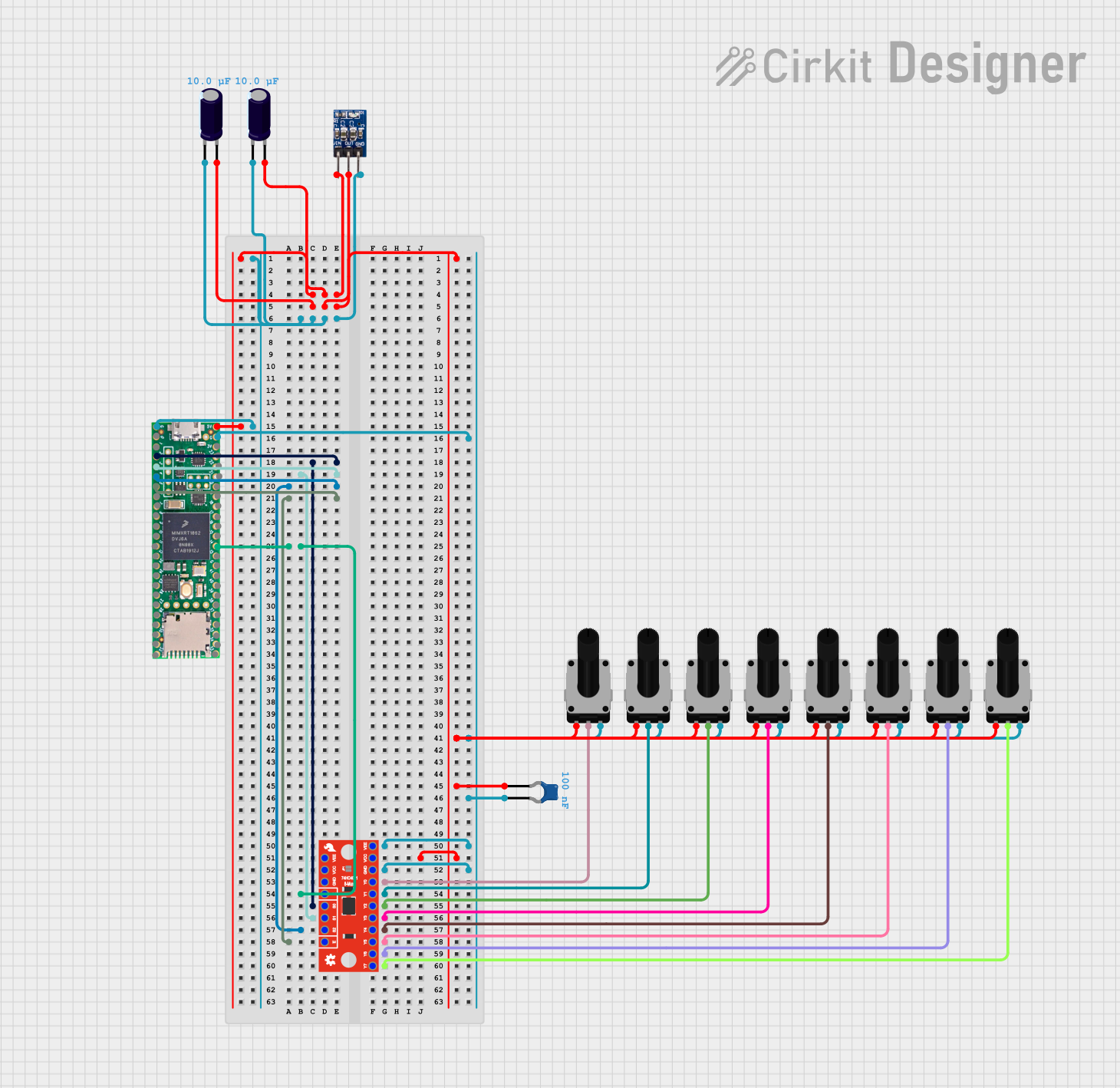
 Open Project in Cirkit Designer
Open Project in Cirkit Designer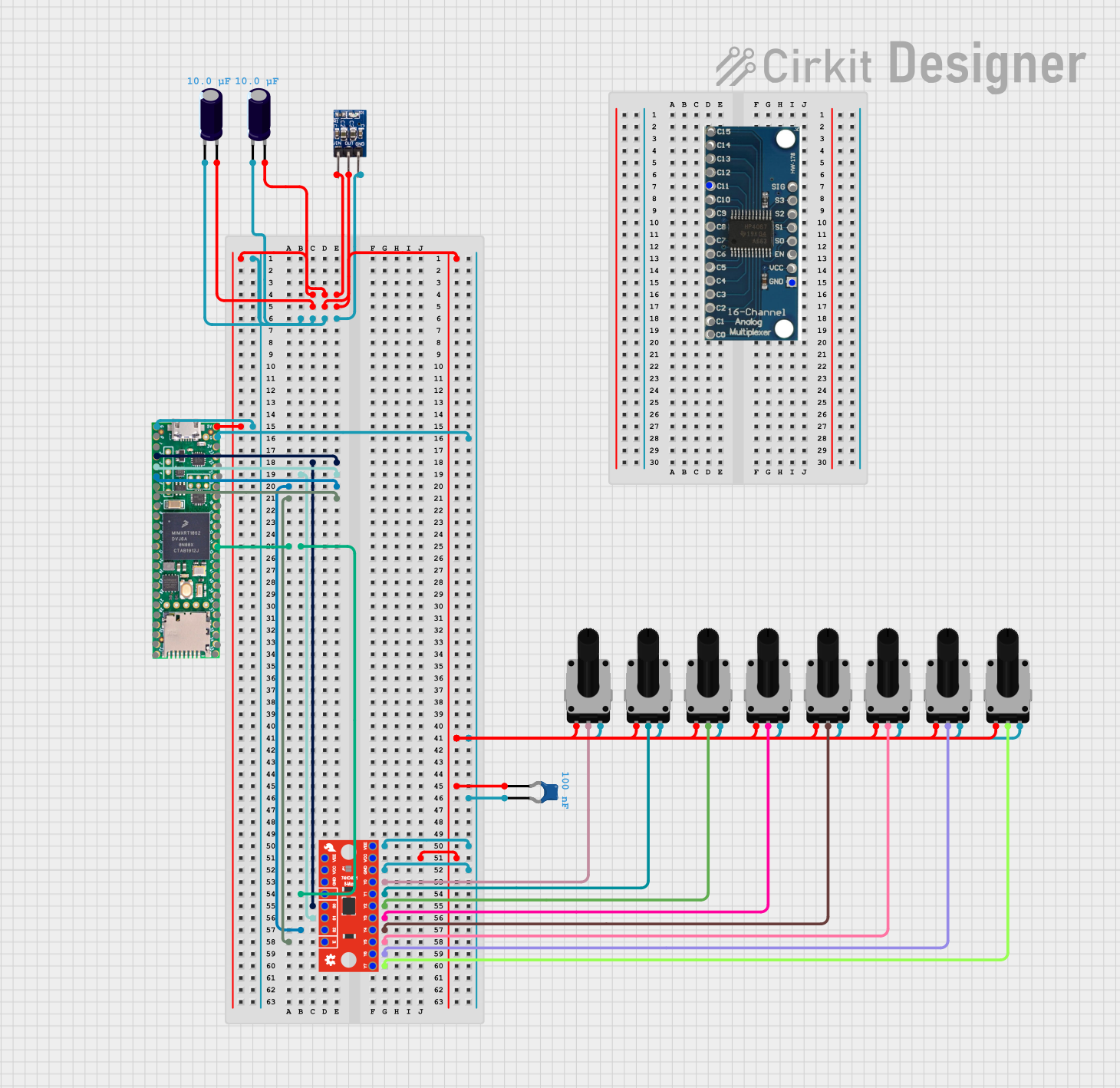
 Open Project in Cirkit Designer
Open Project in Cirkit Designer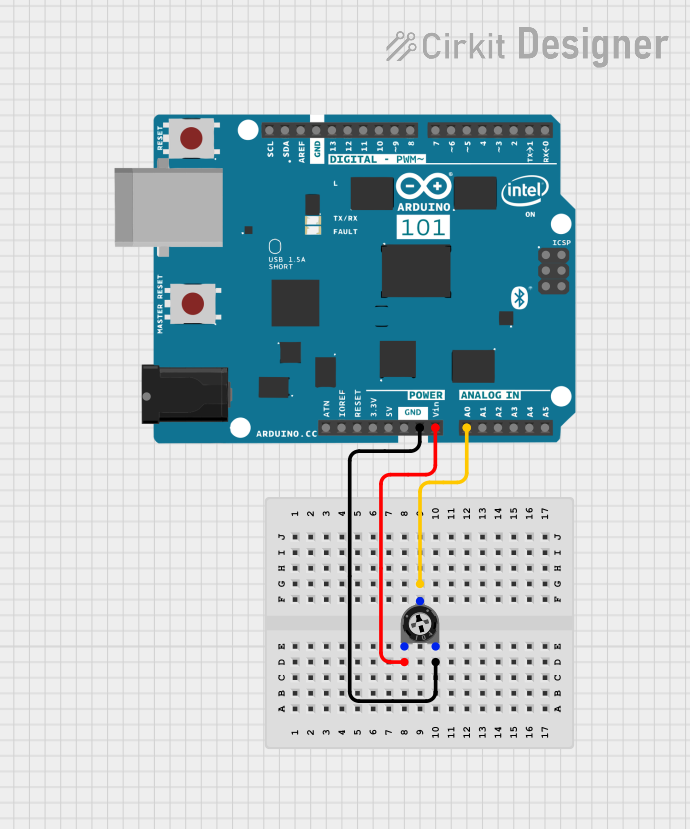
 Open Project in Cirkit Designer
Open Project in Cirkit Designer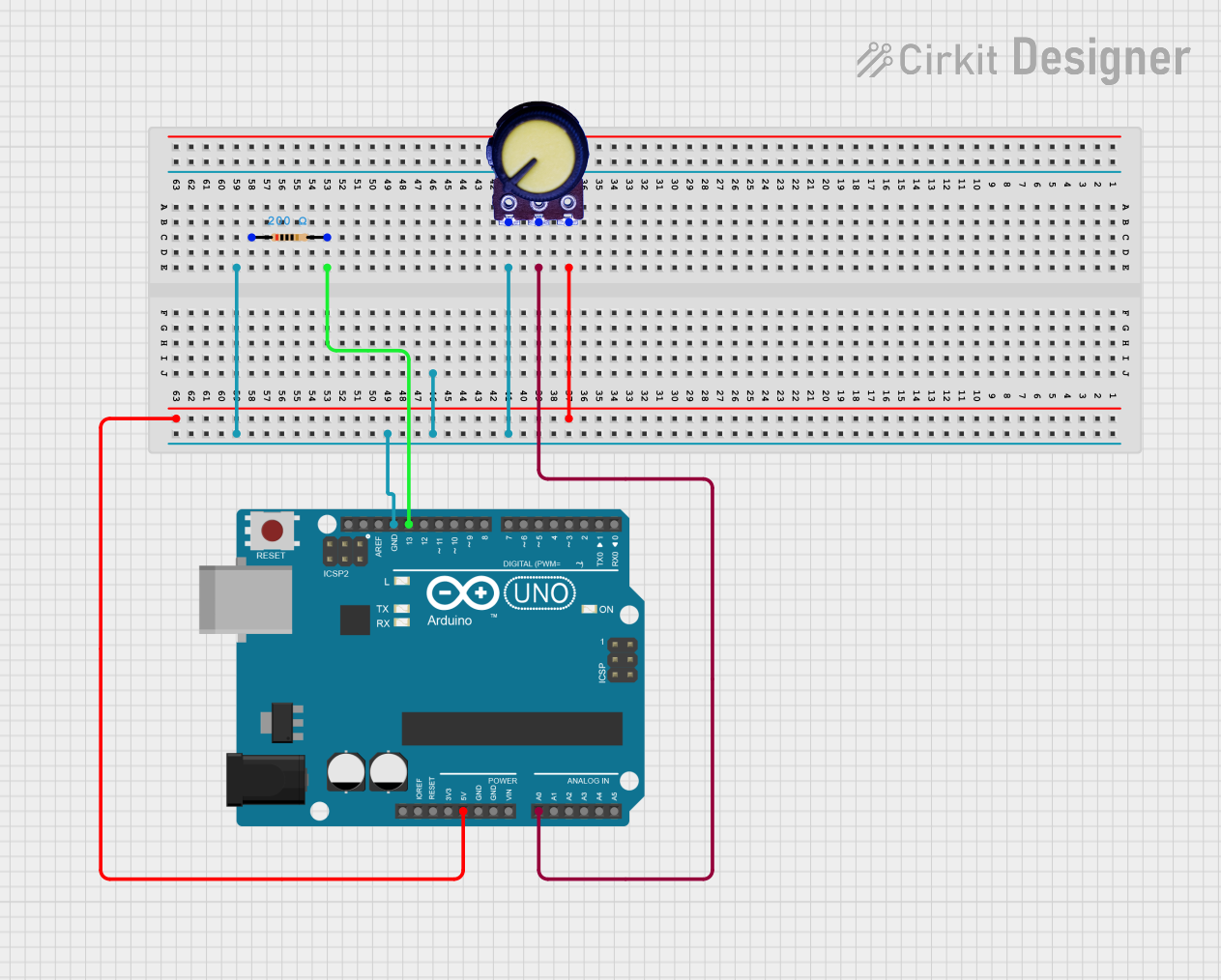
 Open Project in Cirkit Designer
Open Project in Cirkit DesignerExplore Projects Built with 10k Potentiometer

 Open Project in Cirkit Designer
Open Project in Cirkit Designer
 Open Project in Cirkit Designer
Open Project in Cirkit Designer
 Open Project in Cirkit Designer
Open Project in Cirkit Designer
 Open Project in Cirkit Designer
Open Project in Cirkit Designer